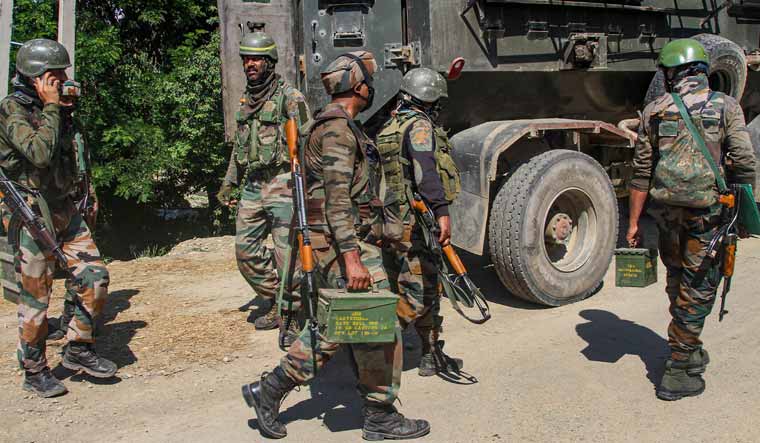
SOURCE : THE WEEK
Last year when Article 370 was revoked and Jammu and Kashmir was placed under a lockdown and communication blockade, anti-militancy operations were suspended for more than two months. According to informed sources, the priority then had shifted from neutralising militants to preventing a public backlash against the scrapping of Article 370 that had granted limited autonomy to Jammu and Kashmir under the Indian Constitution.
During the lockdown due to the outbreak of coronavirus (COVID-19) pandemic, however, the security forces have intensified operations against militants. Since the start of 2020, 88 militants have been killed up to June 8. Of these, 37 alone belonged to the Hizbul Mujahideen( HM), Kashmir’s oldest and the largest indigenous militant group.
Despite the presence of Jaish-e-Muhammad (JeM) and Lashkar-e-Toiba (LeT), both dominated by foreign militants, militancy in Kashmir has always been about Hizbul Mujahideen. While Jaish and Laskhar are highly lethal, the Hizbul Mujahideen brings to the table what both the other groups lack: Local colour and legitimacy in the eyes of many people in Kashmir and outside.
Since the 1990s, the Hizbul Mujahideen has lost hundreds of fighters, but the group has survived to continue its fight. This, in turn, has kept the separatist cause in Kashmir alive.
Kashmir-based mainstream parties, especially the PDP, have often shied away from calling the Hizbul Mujahideen as terrorists.
Hizbul Mujahideen has managed to stay afloat despite dearth of leadership and weapons. Its supreme commander, Syed Peer Muhammad Yousf Shah alias Syed Salahuddin, has been living in Pakistan-occupied Kashmir (PoK) since 1993 and has had little direct influence on the functioning of the group.
One of the major strengths of the group has been the support from local residents and Jamaat-e-Islami, one of Kashmir’s largest socio-religious organisations.
The organisation was targeted by Ikhwan, militants who surrendered and turned counter-insurgents, in the past,and also by the government from time to time. According to sources, around 1,700 members of the Jamaat have been killed since the start of militancy in Kashmir.
Hizbul Mujahideen commander Burhan Wani was instrumental in reviving militancy in Kashmir, especially in south Kashmir, through effective use of social media, after PDP had successfully weaned away a lot of people with separatist tendencies into the mainstream after dislodging the National Conference from power after three decades with the help of the Congress in 2002.
Wani’s killing in 2016 triggered the biggest uprising in Kashmir since the 1990s, in which more than 110 civilians were killed and scores were blinded by pellets in one or both eyes. The uprising also undid all the gains of the PDP and culminated in the collapse of the PDP-BJP coalition in June 2018 and the abrogation of Article 370 a year later.
Last year during the lockdown after abrogation of Article 370, many foreign militants of Jaish and Lashkar managed to sneak into Kashmir from PoK, but their presence has had little impact on the onslaught of the security force against the militants.
Since April, the Hizbul Mujahideen has lost six senior commanders including chief operations commander Riyaz Naikoo on May 5 at Beighpora in Pulwama, and central Kashmir commander Junaid Sehrari at Kani Manzar, Nawakdal, in Srinagar on May 19. The killings of Naikoo and Sehari, son of chief of Tehreek-e-Hurriyat, which is a constituent of Syed Ali Geelani-led Hurriyat Conference, have dealt telling blows to the group.
Hizbul Mujahideen also lost nine militants in 24 hours in two operations on June 7 and 8, at Reban and Pinzur in Shopian in which five and four militants were killed, respectively.
“Nine militants of Hizbul Mujahideen have been killed in operations that were carried out yesterday and today,” Jammu and Kashmir DGP Dilbagh Singh said on Monday. “In the last two weeks, nine big operations were carried out in which 22 militants have been eliminated including six top commanders.”
The Hizbul Mujahideen has absorbed recurring setbacks since the eruption of the militancy in 1989, but the group has managed to survive to fight on, often at great cost.
https://defencenewsofindia.com/jaish-lashkar-are-lethal-but-jk-militancy-is-only-about-hizbul-mujahideen/






